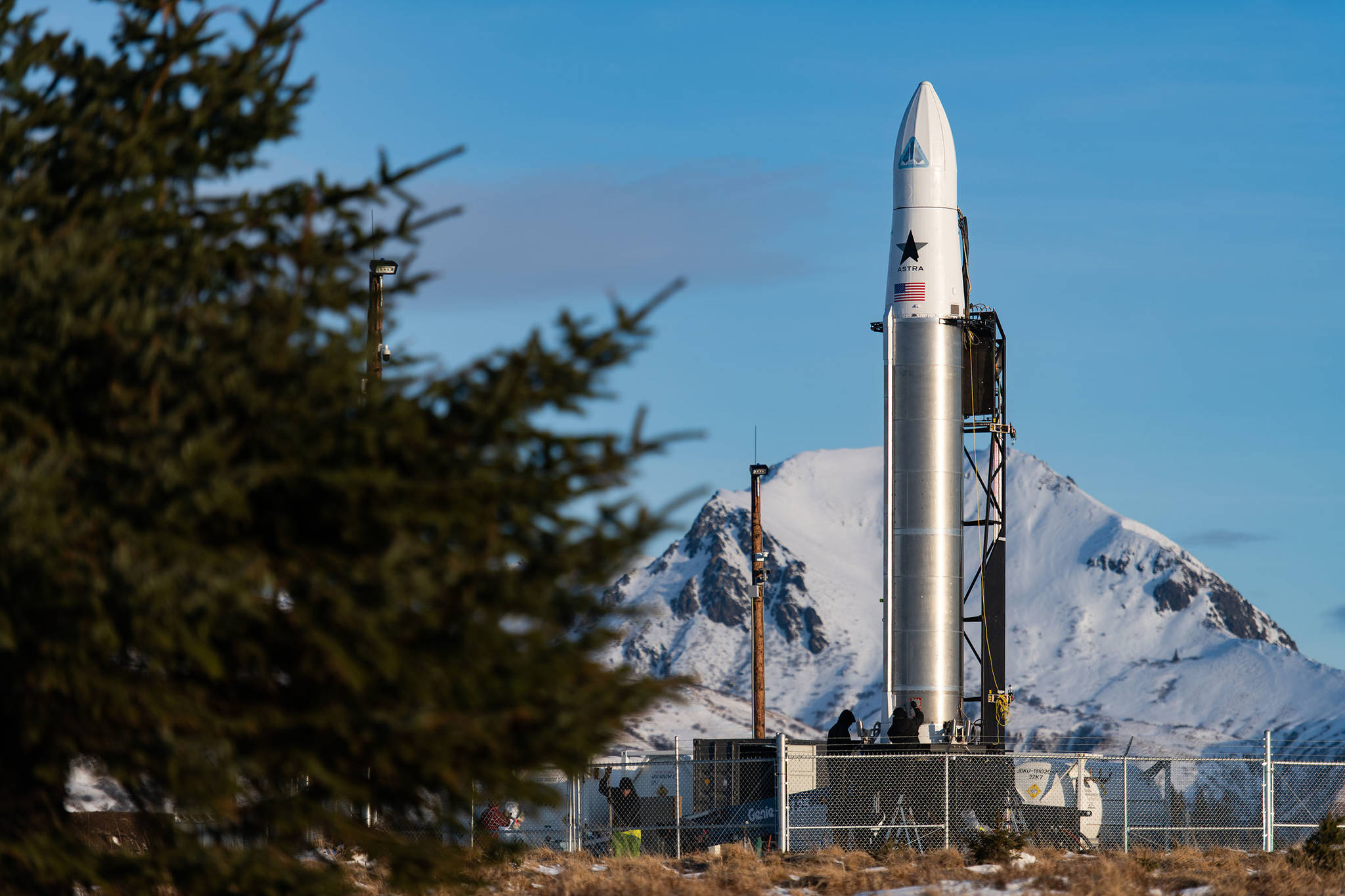With a launch coming up in a matter of days, Kodiak’s Pacific Spaceport Complex – Alaska is looking at ramping up its capabilities and number of vehicles delivered into orbit.
“We’re licensed for up to nine launches per year. We’re working with the FAA (Federal Aviation Administration) to increase it to 36. You have room if a third commercial launch company wants to come on,” said Mark Lester, the president and CEO of the Alaska Aerospace Corporation, which administers the spaceport, in a phone interview. “I think that’s a really good pace to make the spaceport vibrant.”
The spaceport, which opened in 1998, had several launches scheduled for 2020 that the coronavirus pandemic has interfered with.
“Historically, we’ve launched one a year,” Lester said. “This year we expected to launch six, but with COVID, things slowed down.”
Working with the community
The spaceport, about 40 miles from the city of Kodiak, is scheduled to launch a commercial rocket, with the launch window beginning on Aug. 2 and closing on Aug. 7.
“We can have really nice weather in Kodiak but we can get some storms,” Lester said. “It’s really important for the local community and local aviators as well as trans-Pacific flights.”
Launch schedules need to be cleared with the FAA, as well as with the local community, to minimize disruption to flights, commercial fishing and people in the park the spaceport itself is sited in.
“We have six launch pads. We have pretty robust capability. We have payload processing. Two command and control centers. I feel comfortable that our infrastructure is in a good place,” Lester said. “Now we’re using the spaceport as an economic hub to create more aerospace activity.”
Unlike the launch pads NASA uses at Cape Canaveral, which loft their payloads in an equatorial orbit, PSCA launches into an orbital track, which is useful for different types of payloads.
[Mine developer sees review as positive for Alaska project]
“The polar orbit is why Kodiak is valuable. The only other place you can go into polar orbit from the U.S. is Vandenberg Air Force Base in California,” Lester said. “There’s a role here for Kodiak to support government missions, military missions and commercial missions.”
Rockets and payloads are conveyed up to Kodiak by sea and then truck, Lester said.
“We’ll ship it up in 40-foot containers. We get it at the port, Kodiak has a nice ice-free port,” Lester said. “Sometimes, they’ll fly them in on C-130s if they need to get them up here faster.”
The PSCA is also preparing to support human spaceflight, after a fashion, Lester said. Space Perspective, a Florda-based company that offers rides for eight passengers and crew in advanced balloons to the very edge of space.
This will be the first manned space launches from PSCA, Lester said. Space Perspectives is currently working with PSCA and the FAA to make sure operations are safe and efficient for everyone in the airspace.
Space Force and Space Command
With the standing up of the Space Force as the newest armed service, Lester said, there’s rich potential for Alaska as an anchor point for U.S. national interests in orbit and on the surface that the spaceport can support.
“The Space Force is exciting,” said Lester.
While PSCA and the Alaska Aerospace Corporation don’t have a contract with the new service yet, they do have work with the Space Development Agency.
“Continuing to support national security missions is part of our portfolio,” Lester said.
[Recent earthquake adds missing piece to puzzle]
Gov. Mike Dunleavy recently published an opinion piece urging the Department of Defense to base U.S. Space Command in Alaska. Space Command is a combatant command of the Air Force, different from the Space Force, responsible for military operations more than 100 kilometers (about 62 miles) above the surface of the planet.
“Alaska has been important to the military for a long time. The Arctic is certainly important,” Lester said. “Early warning, missile defense, air defense, the University of Alaska, the spaceport. Alaska offers a lot to U.S. Space Command.”
For now, Lester said, PSCA will keep doing what it excels at, supporting launches and promoting economic growth in Alaska’s aerospace industry.
“This is my dream job, to be running a spaceport, to be defining what spaceport is. Spaceports can learn a lot from airports,” Lester said. “We look forward to seeing Astra launch and continuing to support their launch. We’re continuing to try and think through how Alaska Aerospace brings economic value.”
• Contact reporter Michael S. Lockett at 757-621-1197 or lockett@juneauempire.com.

